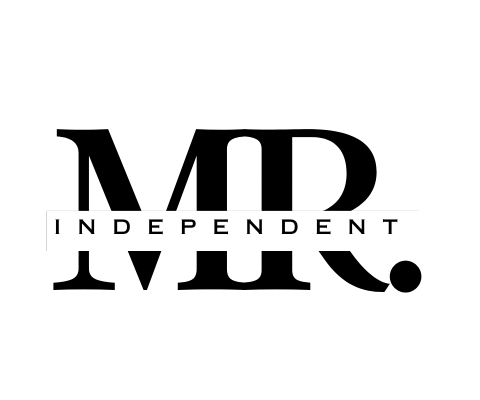Playing it safe feels pretty cozy, doesn’t it? You know exactly what I mean – that mind-numbing job you’ve mastered years ago, the “meh” relationship you’re too lazy to leave, or that brilliant business idea gathering digital cobwebs on your phone.
Hard pill to swallow: Your comfort zone is actually a clever trap. While you’re avoiding risks, your dreams are slowly shriveling up in the corner. And that “security blanket” you’re clinging to? It’s more like a straitjacket.
Wake-up call: Every time you choose the safe path over the scary-but-exciting one, you’re basically high-fiving mediocrity. Those “someday” plans? They’re collecting dust while someone else is out there actually doing them.
Time to get honest: What bold moves are you avoiding right now that could completely transform your life by next year?
Key Takeaways
- Fear of unknown outcomes keeps you in familiar but limiting patterns that prevent personal and professional growth.
- Perfectionism paralyzes your progress as you wait for ideal conditions rather than taking imperfect action.
- Excessive need for external validation causes you to prioritize others’ approval over your authentic desires.
- Comparison with others’ journeys creates excuses to avoid risks and stay in your comfort zone.
- Fear of failure prevents you from viewing mistakes as valuable learning opportunities essential for development.
You’re afraid of the unknown and prefer comfort
Sticking with what’s familiar feels like wrapping yourself in a cozy blanket—safe, predictable, and oh-so comfortable.
You’ve created this perfectly controlled environment where surprises are minimal and risks are practically non-existent. The thought of venturing beyond these self-imposed boundaries makes your stomach tighten and your mind race with worst-case scenarios. Whether it’s staying in that mediocre job, maintaining relationships that no longer serve you, or avoiding new experiences, your preference for comfort has become the invisible fence containing your potential.
This safety-first approach might shield you from immediate discomfort, but it comes with its own price tag—missed opportunities and stunted growth.
When you consistently choose the well-worn path over the unexplored trail, you’re fundamentally telling yourself that the possibility of failure outweighs the potential for discovery. Your comfort zone, originally designed as a temporary resting place, has changed into permanent housing.
The irony? What feels like protection is actually exposure—to regret, wondering “what if,” and watching others experience the breakthroughs you secretly desire. Playing it safe isn’t always as safe as it seems.
These common comfort zone myths often prevent us from recognizing that discomfort is actually a catalyst for personal development.
You’re too focused on avoiding failure rather than learning
Fear of failure has become your greatest roadblock to genuine growth, creating a paralyzing barrier between you and your potential. You’ve built walls around yourself, meticulously avoiding any situation where you might stumble, trip, or—heaven forbid—fall flat on your face, while simultaneously reinforcing negative self-talk patterns that perpetuate this self-limiting cycle.
| Failure Avoidance | Growth Mindset |
|---|---|
| “I can’t risk it – it’s too dangerous” | “Let’s see what happens and learn from it” |
| Stays in comfort zone, avoiding challenges | Embraces challenges as opportunities |
| Sees mistakes as shameful and permanent | Views errors as data points for improvement |
| Quits when things get hard or unclear | Persists through difficulties with determination |
| Focuses on protecting ego and image | Prioritizes personal development over perception |
| Blames external factors for setbacks | Takes ownership of outcomes and learning |
Remember when you learned to ride a bike? You didn’t master it without a few scrapes. The same principle applies now—your skinned knees weren’t failures; they were stepping stones to freedom.
The path to mastery requires embracing discomfort and accepting that setbacks are natural stepping stones toward achievement. Every successful person you admire has a graveyard of failures behind them, but their resilience and willingness to learn from these experiences is what ultimately shaped their success story.
Hidden costs of comfort can silently sabotage your potential for meaningful personal development and growth.
You seek validation from others instead of trusting yourself
You know that feeling when you’re unsure about a decision, so you text five different friends asking what they think? That’s external validation in action. When you constantly seek others’ approval – whether it’s asking for feedback on every outfit choice or needing reassurance that your career move isn’t crazy – you’re fundamentally outsourcing your confidence.
This habit keeps you stuck in “playing it safe” mode because you’re more concerned with others’ opinions than your own intuition. Your inner compass gets rusty when you never trust it to navigate life’s choices.
The problem deepens when validation-seeking becomes your default setting. You start choosing the path that will receive the most nods of approval rather than what genuinely excites you. Those dreams gathering dust? They’re waiting for you to trust yourself enough to pursue them without a committee vote.
Breaking this cycle means sitting with the discomfort of making decisions based on your own wisdom, even when it feels wobbly at first. True growth happens in that space between wanting external confirmation and boldly moving forward on your own terms. These self-imposed limits often masquerade as rational excuses for avoiding personal growth.
You’ve become obsessed with perfection instead of progress
The perfection trap lurks around every corner, manifesting in countless subtle ways that can derail your progress, especially when you’ve already invested significant emotional energy in seeking validation and approval from others. You’ve transformed into your own harshest inner critic, obsessing over every minute detail and perceived inadequacy while your aspirations and goals remain perpetually out of reach, gathering metaphorical dust in the corners of your mind. This perfectionism paralysis isn’t serving as the protective shield you might imagine it to be—instead, it has become the very chains that bind you from taking meaningful action and making real progress. Embracing discomfort is the key to unlocking your potential for breakthrough moments and genuine growth.
| Perfectionism Trap | Progress Mindset | Result | Real-World Impact |
|---|---|---|---|
| “I’ll start when I’m ready” | “I’ll learn by doing” | Action vs. Stagnation | Immediate growth through hands-on experience vs. eternal waiting |
| “Mistakes mean failure” | “Mistakes mean growth” | Freedom vs. Fear | Building resilience through setbacks vs. remaining fragile |
| “It must be flawless” | “It must be attempted” | Completion vs. Avoidance | Creating finished work vs. endless revisions |
| “What will others think?” | “What will I learn?” | Evolution vs. Paralysis | Personal development vs. external validation |
| “Everything must align perfectly” | “Progress over perfection” | Movement vs. Inertia | Consistent improvement vs. perpetual planning |
Your relentless pursuit of the perfect outcome has metamorphosed into the ultimate self-sabotaging excuse, creating an impenetrable barrier between you and your goals. While you’re meticulously polishing that first step to a mirror shine, consumed by the details that ultimately don’t matter, others are steadily ascending their own mountains, stumbling and learning but ultimately making real progress in their journey.
The path to growth lies not in the flawless execution of each step, but in the consistent movement forward, even when the path ahead seems uncertain or imperfect. Every moment spent in the pursuit of perfection is a moment lost to actual progress, and the greatest achievements in life often come not from perfect execution, but from the courage to take imperfect action and learn from the resulting experiences.
You prioritize security over the potential for growth
When you’re constantly playing it safe, you’ve made a subconscious bargain: trading exciting possibilities for predictable comfort.
You choose the secure job with minimal risk instead of the higher-paying position that stretches your abilities. You keep money in low-interest savings accounts rather than considering investments that might multiply your wealth.
While everyone around you seems to be taking calculated leaps forward, you’re standing firmly in place, wrapped in the illusion of security.
This safety-first approach might protect you from immediate disappointment, but it creates a different kind of risk—the danger of unrealized potential.
Growth requires venturing into uncertain territory, where success isn’t guaranteed but absolutely possible.
The most meaningful achievements in life typically happen just beyond the borders of your comfort zone.
When security becomes your primary focus, you inadvertently build walls around yourself that not only keep danger out but also trap opportunity on the other side.
Recognizing these signs of stagnation can be the catalyst that propels you toward embracing new challenges and personal growth.
You’re worried about what people will think of your risk
Behind many stalled dreams lies the specter of social judgment, that nagging voice wondering what others will say if you fail. This social anxiety isn’t just annoying—it’s actively sabotaging your progress and preventing you from taking meaningful steps forward. You’ve built an entire identity around being “sensible” and “practical,” carefully constructing a facade of reasonable behavior that others will approve of. To be completely frank: you’re just afraid, and this fear has become the primary architect of your decisions.
| What You Think People Will Say | What They’re Actually Thinking | The Reality |
|---|---|---|
| “She’s being irresponsible with her career/finances/future” | “Wish I had her courage to pursue what she really wants” | Most people are too consumed with their own daily struggles and anxieties to spend time judging others |
| “He’s going to fail miserably and embarrass himself” | “Good for him for trying something new and challenging” | Everyone fails sometimes, and failure is an essential part of growth and learning |
| “That’s a stupid idea that will never work in reality” | “That’s interesting – I wonder how it might succeed” | Innovation and breakthroughs consistently emerge from ideas initially dismissed as foolish |
| “What a waste of potential and resources” | “At least they’re living life on their own terms” | The real waste is allowing potential to wither while playing it safe |
| “They’ll regret this decision later in life” | “They’re brave to take this risk now” | Regret most often comes from not taking action, not from trying |
Your self-perception is filtered through imaginary critics who don’t exist. Meanwhile, life’s passing by, taking with it opportunities that may never return.
The impact of this fear-based decision making extends far beyond just missed opportunities or delayed dreams. Every time you allow these imagined judgments to dictate your choices, you’re reinforcing a pattern of self-limitation that becomes increasingly difficult to break. The truth is that most successful people faced similar fears and doubts but chose to act despite them, understanding that personal growth requires pushing beyond the comfortable boundaries of social approval.
Only by conquering your fears can you unlock the valuable lessons that life has waiting for you.
You lack confidence and question your abilities constantly
You lack confidence and question your abilities constantly as part of “playing it safe” because uncertainty has become your comfort zone. That voice in your head keeps whispering, “Are you really good enough?” until you believe the answer is no.
This internal doubt isn’t just occasional nervousness—it’s a persistent pattern where you second-guess decisions, overanalyze your performance, and assume others are more capable than you are. When faced with challenges or opportunities, your first instinct is to question whether you have what it takes, creating a self-fulfilling prophecy where you either avoid risks entirely or approach them halfheartedly.
This constant self-doubt creates a distorted view of your actual abilities and prevents you from recognizing your strengths. The cruel irony? You’ve likely developed genuine skills and talents that remain hidden behind the wall of uncertainty you’ve built.
Meanwhile, you watch others—often no more qualified than you—step forward with conviction. The difference isn’t ability but perception; they move forward despite doubts, while you allow yours to become roadblocks.
Breaking free requires acknowledging this pattern and taking small, deliberate steps outside your comfort zone, gradually building evidence that contradicts your negative self-assessment. Committing to deliberate discomfort daily helps reshape your relationship with uncertainty and builds lasting confidence.
You’re afraid of making mistakes and looking foolish
Fear of judgment and the paralyzing dread of making mistakes governs your actions in ways you might not fully recognize or acknowledge. You’ve built an invisible prison around yourself, carefully avoiding situations where you might mess up publicly, creating elaborate excuses and safety mechanisms that limit your potential growth. This mistakes mindset keeps you stuck in a cycle of self-doubt and hesitation, unable to grow beyond your comfort zone and pursue meaningful opportunities. The core problem isn’t your capability or intelligence—it’s your unhealthy relationship with failure and the excessive weight you place on others’ opinions. Consider taking on a 30-day growth challenge to systematically push past your comfort boundaries and build resilience.
| Fear Factors | What You Think | Reality Check |
|---|---|---|
| Public Speaking | “I’ll forget my words and look like a fool” “My voice will shake” | Everyone stumbles sometimes, audiences are usually supportive and understanding |
| New Skills | “I’ll look incompetent and others will judge me” “I’m too old to start” | Beginners aren’t expected to be experts, learning is a natural part of growth |
| Big Decisions | “What if I choose wrong and ruin everything?” “I’ll disappoint others” | Most decisions are reversible, perfect choices don’t exist |
| Sharing Ideas | “People will laugh and dismiss my thoughts” “My ideas aren’t good enough” | Innovation requires vulnerability, great ideas often start as “crazy” ones |
| Social Situations | “I’ll say something awkward” “Nobody wants me there” | Most people are focused on themselves, not judging you |
The path to overcoming these limiting beliefs requires a fundamental shift in how you view personal growth and self-worth. Understanding that mistakes are not just inevitable but essential stepping stones to mastery can transform your approach to challenges and opportunities. Your fear of judgment is holding you back from experiences that could lead to remarkable personal and professional development, and recognizing this pattern is the first step toward breaking free from self-imposed limitations.
You’re trying to please everyone, even at your expense
You know that feeling when you’re bending over backward to make sure everyone around you is happy, while your own needs get shoved into some forgotten corner? That’s what playing it safe looks like—saying yes when you want to say no, agreeing with opinions you don’t actually share, and avoiding conflict at all costs.
The truth is, this people-pleasing habit might keep the surface waters calm, but beneath that placid exterior, you’re drowning in resentment and exhaustion. Your calendar fills with commitments you dread, your true voice gets muffled, and somehow everyone else’s priorities become more important than your own.
This pattern of putting yourself last isn’t just exhausting—it’s actually counterproductive. When you constantly compromise your authentic self to please others, you establish a dangerous precedent: teaching people that your boundaries are optional and your needs are negotiable.
The painful irony? Most people actually respect you less, not more, when you become a human doormat. Meanwhile, your stress levels climb, your self-respect crumbles, and that gnawing feeling grows—the one whispering that you’re living someone else’s version of your life rather than creating your own. Embracing personal growth opportunities often means disappointing others to honor your own path.
You underestimate your potential and overestimate your limits
When the voice in your head whispers “you can’t do that” for the hundredth time, it’s not protecting you—it’s imprisoning you in a self-constructed cage of limitations. You’ve built invisible walls around your capabilities through years of negative self-talk, mistaking self-doubt for self-awareness, while your true potential remains largely untapped. The limits you believe are real are mostly fictional stories you’ve internalized from past experiences, social conditioning, and fear of failure. Your mind has become an echo chamber of self-imposed restrictions, reinforcing these barriers until they feel as solid as concrete walls.
| What You Think | What’s Actually True |
|---|---|
| “I’m not smart enough” | You haven’t fully applied yourself or discovered your optimal learning style |
| “I’ll probably fail” | You haven’t failed enough yet to build the resilience needed for success |
| “Someone else is better” | Someone else just started sooner and has made more mistakes to learn from |
| “I don’t have the talent” | You haven’t practiced consistently or developed your skills systematically |
| “It’s too late for me” | You’re exactly where you need to be on your unique journey |
| “I don’t have the resources” | You haven’t fully explored available alternatives or creative solutions |
| “I don’t deserve success” | You’re letting past experiences dictate your future potential |
Personal growth happens when you step into uncomfortable territory, pushing beyond the familiar confines of your comfort zone. Your potential isn’t some fixed quantity—it expands every time you push against those imaginary boundaries and embrace the discomfort of growth. Transformational courage requires embracing the very experiences that make you most uncomfortable.
The journey of breaking through limitations begins with recognizing that your perceived barriers are largely self-constructed manifestations of fear and uncertainty. Every time you challenge these limitations, you’re not just achieving immediate goals—you’re rewiring your brain’s understanding of what’s possible and expanding your capacity for future growth. The key to unleashing your full potential lies in consistently questioning your assumptions about your capabilities and systematically proving your limitations wrong through deliberate action and persistent effort.
You’re waiting for the perfect moment that may never come
We all know that feeling of waiting for everything to align perfectly before taking action. You tell yourself you’ll start that project when you have more time, apply for that job when you’ve gained more experience, or pursue that relationship when you’re in better shape.
But truth be told, those perfect conditions might never materialize. While you’re standing still, hesitating at the starting line, life continues moving forward without you, and opportunities quietly slip through your fingers like sand.
This habit of playing it safe by waiting for perfect timing is actually the riskiest move of all. Think about how many dreams remain just that—dreams—because someone was too cautious to pursue them with imperfect circumstances.
The uncomfortable truth? Growth happens in those messy, uncertain spaces where you don’t feel 100% ready. Taking that imperfect leap might feel terrifying (and honestly, a bit like jumping off a cliff with a questionable parachute), but it’s precisely where you’ll discover capabilities you never knew you had.
Perfect moments don’t appear—they’re created when you decide to begin despite your fears. Learning to embrace discomfort zones consistently can rewire your brain to see challenges as opportunities rather than threats.
You’ve been conditioned to play it safe from childhood
The roots of your hesitation run deeper than you might realize, shaped by years of subtle but persistent messaging during your formative years. That childhood conditioning where you were taught to color inside the lines didn’t accidentally create your risk aversion – it was a systematic process that occurred through repetitive reinforcement and social learning. Every time you were told “better safe than sorry,” your brain formed neural pathways that now light up like Christmas trees when you consider taking chances, creating an automatic response system that prioritizes caution over opportunity.
| Childhood Message | What You Heard | Real-World Impact |
|---|---|---|
| “Don’t get hurt!” | “Never try anything risky or unknown” | Missed career opportunities, avoided relationships, delayed personal growth |
| “Follow the rules” | “Don’t question authority or innovate” | Creative stagnation, fear of entrepreneurship, resistance to change |
| “What will others think?” | “Conform at all costs to social norms” | Living someone else’s life, suppressed authenticity, chronic people-pleasing |
| “Stay where it’s safe” | “Avoid uncertainty at all costs” | Limited life experiences, restricted personal development, comfort zone imprisonment |
| “Be practical” | “Dreams are dangerous luxuries” | Abandoned passions, settled for mediocrity, unfulfilled potential |
Look, we’re not blaming your parents – they meant well and were likely passing down their own learned patterns of safety-seeking behavior. But those safety wheels they installed have become deeply embedded in your decision-making framework, long after you’ve outgrown them. Empowering affirmations can help break these deeply ingrained patterns of fear and hesitation.
This ingrained safety mindset has created a complex web of self-limiting beliefs that affect everything from career choices to personal relationships. The good news is that understanding these patterns is the first step to rewiring them, and with conscious effort and practice, you can begin to challenge these deeply rooted assumptions about risk and safety.
You avoid discomfort because you’re afraid of growth
You know that uncomfortable feeling when you’re about to try something new? The racing heart, sweaty palms, and that voice in your head saying, “Maybe I should just stick with what I know.” That’s your comfort zone desperately trying to keep you safely within its boundaries.
We often mistake this discomfort for a warning sign, when actually, it’s the doorway to personal change. By consistently choosing the familiar path, you’re not protecting yourself—you’re stunting your own growth, creating a smaller life than you deserve, all because growth necessarily involves stretching beyond what feels comfortable right now.
The irony? This avoidance strategy creates more pain in the long run. Each time you back away from a challenging situation, you reinforce the belief that you can’t handle discomfort, making your comfort zone even smaller. Meanwhile, opportunities for meaningful connections, career advancement, and self-discovery slip away.
The uncomfortable truth is that personal development happens precisely at the edge of discomfort—that’s where new skills form, confidence builds, and possibilities expand. When you begin seeing discomfort as a sign you’re onto something important rather than something to escape, everything changes.
Your relationship with growth changes from something frightening into something fascinating.
You don’t take action because you’re paralyzed by fear
Paralysis lurks behind every “someday” promise you’ve made to yourself, manifesting as a subtle but persistent resistance to forward motion. You’ve got big dreams tucked away in mental filing cabinets, collecting dust while fear-based inaction keeps you frozen in place, watching opportunities slip by like leaves in a stream. It’s not merely generic anxiety—it’s a specific brand of paralysis that deserves its own diagnosis, one that systematically dismantles your potential through consistent avoidance. These patterns of self-sabotage have become so familiar that they feel like old friends, even as they hold you back from your true potential.
| Fear Type | What It Sounds Like | Your Action Plan |
|---|---|---|
| Rejection | “What if they laugh?” “I don’t belong here.” | Ask “So what?” three times, Create a rejection resilience journal, Practice small social risks daily |
| Failure | “I’ll mess it up anyway” “I’m not qualified enough” | Start with tiny steps, Document small wins, Build progressive challenges |
| Success | “I couldn’t handle winning” “Success will change me” | Visualize yourself thriving, Create success scenarios, Practice receiving praise |
| Judgment | “Everyone will criticize me” “They’ll see I’m a fraud” | Find your true supporters, Build a criticism filter, Focus on constructive feedback |
| Unknown | “What if something bad happens?” “I can’t predict outcomes” | Create a fear management routine, Map worst-case scenarios, Develop contingency plans |
Your fear isn’t special—it’s standard-issue human equipment that’s been refined through millennia of evolution. The difference between you and those taking action isn’t the absence of fear but rather their relationship with it: they feel afraid too, but move forward anyway, using strategic discomfort as a compass pointing toward growth.
The path through fear-based paralysis requires both acknowledgment and strategic action, creating a balanced approach to personal development. Understanding that fear serves as a signpost rather than a stop sign allows you to reframe these challenging emotions as indicators of meaningful opportunities. The most successful individuals aren’t fearless warriors but rather careful navigators who have learned to sail through storms of doubt with purpose and precision.
You’re constantly comparing yourself to others
Admit it, when you scroll through social media or walk into a room, you’re mentally stacking yourself up against everyone else. This comparison game isn’t just exhausting—it’s the ultimate safety mechanism holding you back from taking risks. When you measure your chapter one against someone else’s chapter twenty, you naturally retreat to what feels comfortable rather than pushing boundaries.
Your brain whispers, “They’re already doing it better, so why bother?” and suddenly playing it safe seems completely logical. This habit creates an impossible standard where you’re either “not good enough yet” or “might fail publicly,” both perfect excuses to stay in your comfort zone.
The truth? Everyone’s journey has different timelines and challenges. Those people you admire took their own messy, imperfect paths to get where they are, complete with failures you never witnessed. Breaking free from comparison doesn’t happen overnight, but recognizing when you’re using others’ success as a reason to play it safe is the first essential step toward genuine growth and self-acceptance.
You’re attached to the familiar, even if it’s unfulfilling
Even when that comfortable routine drains your energy and dims your inner spark, there’s something oddly magnetic and seductively familiar about sticking with what you know. You’ve meticulously built your life around predictable patterns and familiar comfort, while the prospect of breaking free feels exponentially more terrifying than remaining trapped in those unfulfilling daily routines that slowly erode your spirit.
| What You’re Clinging To | What You’re Missing |
|---|---|
| The same daily routine that feels like a security blanket | New experiences that energize you and spark creativity |
| That “fine” relationship lacking real emotional depth | Passionate connection with deep understanding |
| The “good enough” job that pays bills but kills dreams | Work that makes you jump out of bed with purpose |
| Friends who don’t challenge your perspectives | People who inspire personal growth and evolution |
| Your comfort zone of predictable outcomes | The life waiting just beyond fear with infinite possibilities |
| The familiar neighborhood you’ve outgrown | Adventures in unexplored territories |
| The same restaurants and entertainment spots | Diverse cultural experiences that broaden horizons |
You’re like someone refusing to leave a house that’s slowly sinking into quicksand because, hey, at least you know where the light switches are. That familiar discomfort has become your identity.
The cycle of familiarity keeps you tethered to patterns that no longer serve your growth, much like a well-worn path that leads nowhere new but feels safe beneath your feet. Your resistance to change acts as both a shield and a prison, protecting you from potential disappointment while simultaneously blocking the very experiences that could transform your life into something extraordinary and deeply fulfilling.
You focus on worst-case scenarios instead of possibilities
When your mind constantly jumps to disaster scenarios, you’re living in a world of “what ifs” rather than “what could be.” You’ve probably noticed how you immediately picture the absolute worst outcome for any situation—the job interview where you spill coffee all over yourself, the presentation where you forget everything, or the relationship that inevitably ends in heartbreak.
This habit of catastrophizing keeps you trapped in a safety bubble where nothing bad happens, but nothing amazing happens either.
This worst-case focus fundamentally puts blinders on your vision of life’s possibilities. Instead of seeing the spectrum of potential outcomes—many of which could be neutral or even positive—you zero in exclusively on what might go wrong.
It’s like having a movie projector in your brain that only plays horror films when life actually offers comedies, adventures, and inspiring dramas too.
The irony? Playing it safe this way often creates exactly what you fear: a limited existence where growth remains theoretical rather than lived experience.
You wait for things to change rather than making it happen
Passive waiting has become your default strategy for change, settling into a comfortable but stagnant routine that prevents growth. You’ve convinced yourself that the perfect moment will arrive, that doors will magically swing open without you turning the knob, reinforcing a cycle of inaction that keeps you stuck. The brutal truth remains: change doesn’t happen to you, it happens because of you, through deliberate choices and consistent action. When you wait instead of acting, you’re not being patient—you’re being afraid, letting fear disguise itself as prudence while opportunities pass by.
| Waiting Approach | Change Implementation | Empowerment Strategies |
|---|---|---|
| “When I get promoted…” | Set monthly KPIs and track progress | Schedule weekly meetings with supervisors, document achievements |
| “After I take that class…” | Learn through free online resources now | Find study groups, practice skills daily, create learning schedule |
| “Once the economy improves…” | Develop recession-proof skill sets | Network actively, build emergency fund, identify market gaps |
| “When I feel ready…” | Break goals into micro-tasks | Start with 5-minute daily actions, celebrate small wins |
| “If someone gives me a chance…” | Create portfolio of independent work | Volunteer for projects, start side business, showcase expertise |
The difference between dreamers and achievers isn’t talent—it’s action. Stop waiting for permission to live your life.
Transformative change requires a fundamental shift in how we approach obstacles and opportunities in our daily lives. The gap between where you are and where you want to be isn’t bridged by time alone, but by consistent, purposeful action steps that build momentum toward your goals. Every person who has achieved significant success has faced the same fears and uncertainties you’re experiencing now, but they chose to move forward despite these challenges.
You fear rejection and avoid putting yourself out there
Let’s talk about that nagging voice in your head—the one convincing you to stay comfortable rather than risking rejection. When you fear rejection, you build invisible walls that keep potential connections, opportunities, and growth at a safe distance.
You might avoid asking someone on a date, skip applying for that dream job, or hesitate to share your creative work because the possibility of hearing “no” feels utterly devastating. This protective instinct makes perfect sense; our brains are wired to avoid pain, and rejection genuinely hurts.
The irony of playing it safe, though, is that while you’re avoiding possible rejection, you’re guaranteeing another kind of loss—the loss of what might’ve been. Every time you hold back from expressing yourself or pursuing something meaningful, you’re choosing the certainty of regret over the possibility of triumph.
Remember that rejection isn’t a reflection of your worth; it’s simply information about fit, timing, or circumstance. The people who accomplish remarkable things aren’t those who never face rejection—they’re the ones who keep showing up despite it.
You keep rationalizing your inaction instead of taking risks
Excuses and rationalizations build comfortable prisons around your potential, creating invisible barriers that seem logical but actually hold you back from growth. You’re not taking that chance because “the timing isn’t right” or “you need more preparation,” but to be frank, you’re just overthinking decisions and letting analysis paralysis control your actions. These mental justifications serve as protective shields against the possibility of failure, creating a false sense of security while keeping genuine success perpetually out of reach. The more you engage in these patterns of self-limiting behavior, the stronger these psychological barriers become.
| What You Tell Yourself | What’s Really Happening |
|---|---|
| “I need more research” | You’re hiding from action and using information-gathering as a shield against real commitment |
| “It’s not the right time” | There’s never a perfect time, and waiting only reinforces fear patterns |
| “I might fail” | Success requires failure, and every setback contains valuable learning opportunities |
| “Someone else could do it better” | You’re avoiding your potential and using others’ success as an excuse for inaction |
| “I’m not ready yet” | You’re letting perfectionism mask your fear of beginning |
| “It’s too risky” | You’re overestimating the dangers while undervaluing potential rewards |
Understanding fear is not about eliminating it—it’s about recognizing when you’re letting it disguise itself as “logical reasoning.” Every day you wait is another day your dreams collect dust while your excuses pile up. The risk you’re avoiding might be exactly what sets you free.
The cycle of perpetual preparation and endless planning often masks deeper issues of self-doubt and fear of judgment. Breaking free from this pattern requires acknowledging that imperfect action consistently outperforms perfect inaction, and that the most successful people aren’t necessarily the most talented—they’re the ones who dared to begin before they felt completely ready. Real growth occurs in the space between comfort and chaos, where you push beyond self-imposed limitations and challenge your assumptions about what’s possible.
You let the fear of failure prevent your potential success
When that nagging voice in your head whispers, “What if you mess up?” and you back away from opportunities, you’re choosing the comfort of safety over the thrill of possibility. Fear of failure acts like an invisible cage, keeping you confined to what feels secure while amazing chances pass you by.
We’ve all been there—skipping the job application because “they’ll probably hire someone better,” or not asking that question in the meeting because “it might sound stupid.” These moments add up, and before you know it, you’ve built a life defined by what you avoided rather than what you pursued.
Breaking free from this pattern requires acknowledging that failure isn’t your enemy—it’s simply feedback on your journey. The truth that’s hard to swallow is that successful people don’t succeed because they never fail; they succeed because they fail frequently and learn continuously.
Each time you choose safety over potential achievement, you rob yourself of valuable lessons and possible victories. Consider this: the discomfort of trying and failing lasts temporarily, but the regret of never trying can haunt you indefinitely. Your greatest accomplishments wait on the other side of that fear—just beyond your comfort zone.
Frequently Asked Questions
How Can I Identify Which Specific Fears Are Holding Me Back?
You can identify your specific fears by keeping a “fear journal” where you document moments of hesitation or anxiety throughout your day. Write down what triggered the fear, how it made you feel physically, and what thoughts ran through your mind. Pay attention to situations you consistently avoid or tasks you keep postponing – these often point to underlying fears. Ask yourself direct questions like “What’s the worst that could happen?” and “What am I really afraid of losing or failing at?” Notice physical reactions like stomach knots, racing heart, or sweaty palms as they’re reliable indicators of fear responses. Review your patterns weekly to spot recurring themes and connect the dots between different situations that trigger similar fears.
What Small Steps Can Build Risk-Taking Confidence Without Major Changes?
Building risk-taking confidence starts with tiny daily actions that push your boundaries slightly. Take one small step outside your comfort zone each day – share your honest opinion in a meeting, order something new at lunch, or speak up when you normally wouldn’t. As you master these micro-challenges, gradually increase the stakes by initiating conversations with strangers, volunteering for new projects, or suggesting improvements to your boss. The key is consistent practice with manageable risks that won’t overwhelm you but still create growth.
When Should I Actually Play It Safe Versus Take Risks?
You should play it safe in situations with high stakes and serious consequences like major financial decisions, health choices, or career moves that could impact your long-term stability. Take calculated risks when you have a safety net, can afford potential losses, and see clear opportunities for growth – like starting a side business while keeping your day job, trying a new investment strategy with a portion of your savings, or pursuing opportunities that align with your goals. The key is balancing potential rewards against what you can actually afford to lose in terms of time, money, and resources.
How Do Successful People Overcome Their Initial Fear Barriers?
Successful people overcome initial fear barriers by first openly acknowledging and naming their specific fears, then deliberately reframing each obstacle as a chance to grow. They break down intimidating challenges into smaller, manageable steps, take consistent action despite feeling afraid, and build confidence through celebrating small victories along the way. Rather than trying to eliminate fear completely, they learn to work alongside it while gradually expanding their comfort zone through repeated exposure to what scares them.
Can Personality Type Affect One’s Natural Risk Tolerance Levels?
Personality type significantly affects your natural risk tolerance levels. Research shows that extroverts tend to take more financial and social risks, while introverts generally prefer careful analysis before making risky decisions. If you’re highly conscientious, you’ll likely favor thorough planning and risk mitigation strategies. Understanding your personality traits can help you make better-informed decisions by recognizing your natural biases toward or against risk-taking, allowing you to adjust your approach when needed.
Conclusion
Comfort feels safe. Growth feels scary. That’s why most people pick the easy path.
You can keep hiding in your cozy little bubble, but that bubble is shrinking your world – day by day, choice by choice.
The math is simple: temporary discomfort < lifetime of "what-ifs." Yeah, you might fail. So what? At least you won't be that person who never tried.
Stop waiting for perfect conditions. They don’t exist. Take the messy jump, fall on your face if needed, just stop standing still. Your life is happening *right now*, not in some imaginary perfect future.









